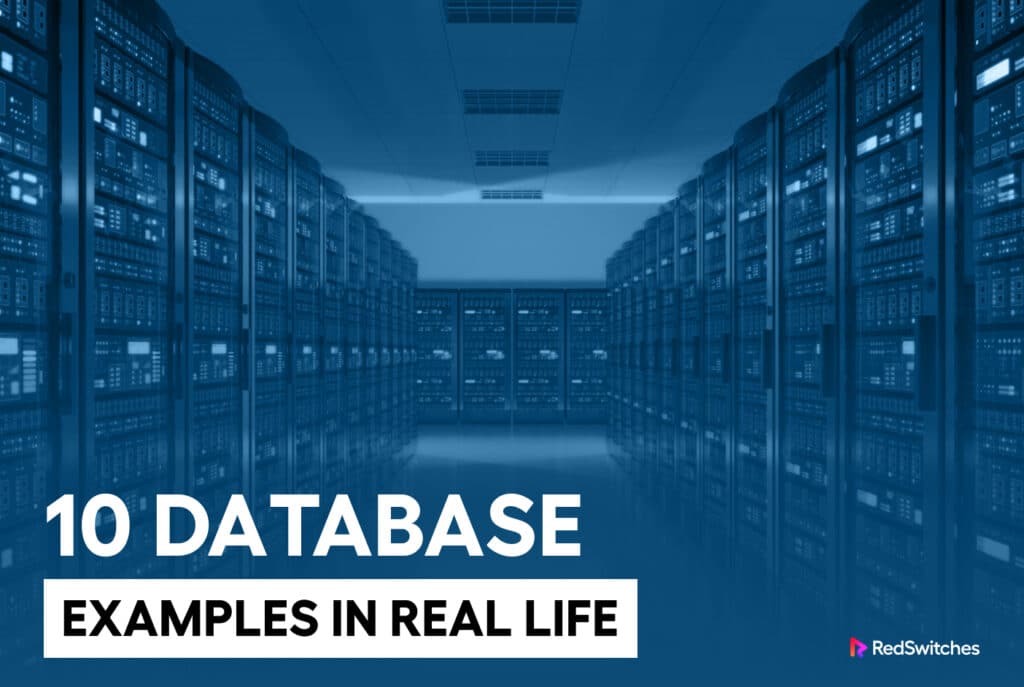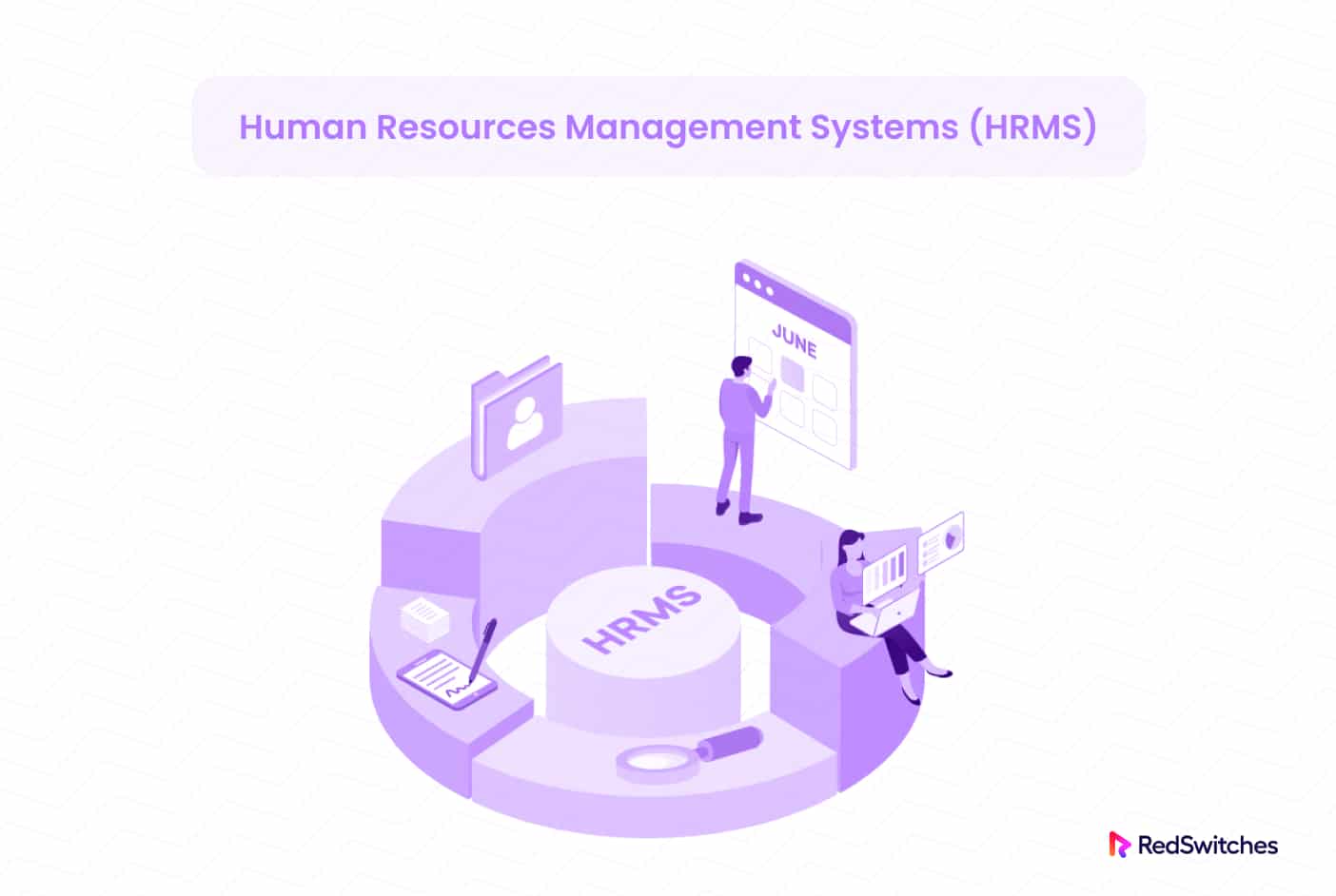Databases are the backbone of modern information systems, providing the foundation for managing and organizing vast amounts of data in various industries.
From small-scale applications to enterprise-level systems, databases play a pivotal role in real-life scenarios, powering critical operations and driving innovation.
This article explores ten compelling examples of databases in action across different sectors. These examples showcase the diverse range of applications where databases excel, from optimizing supply chains to transforming healthcare systems.
We’ll discuss the databases’ real-life implementations, highlighting how they revolutionize industries, streamline processes, and enable data-driven decision-making.
Let’s start with a concise introduction to the concept of a database.
Table Of Contents
What is a Database?
A database is a systematic collection of data that has been managed, organized, and stored to allow for effective information retrieval and modification.
It is a central location for storing all kinds of data, including text, numbers, photos, audio, etc. Databases are designed to handle large amounts of data and provide simple access, editing, and data querying tools.
Databases are crucial for managing data in many applications and industries.
They are commonly used in business environments to store customer information, financial records, and inventory data. Educational institutions use databases to manage student records and academic data. eCommerce platforms utilize databases to store product details, order history, and customer profiles. Furthermore, databases are vital in scientific research, healthcare systems, government operations, and many other fields.
How Are Databases Arranged?
Data is commonly arranged in databases as tables, each with rows and columns.
Each column represents a different property or information about the records, whereas each row represents a particular record. The relationships connecting these tables allow data to be linked and related across several tables.
The data in a database is typically accessed through a query language, such as SQL (Structured Query Language), which allows users to retrieve and manipulate data based on specific criteria.
Databases provide the structure and organization to handle vast amounts of data efficiently, ensuring data integrity, security, and availability for various applications and users.
How Does a Database Work?
A database stores and organizes data in an organized manner and offers tools for quickly retrieving, updating, and managing that data. The essential elements and procedures that go into creating a database are listed below:
- Data Model: A data model defines the structure and organization of data within a database. The most common data model is the relational model, which organizes data into tables with rows and columns. Other data models include hierarchical, network, and object-oriented models with unique structures.
- Database Management System (DBMS): The DBMS software allows users to interact with the database. It provides tools and services to create, manage, and control the database. The DBMS handles data storage, retrieval, manipulation, and enforcing data integrity and security.
- Data Storage: The database stores data on physical devices such as hard or solid-state drives. The data is organized into data files, which are further divided into pages or blocks. The DBMS manages the allocation and organization of data on the storage medium.
- Data Retrieval: Users typically use query languages like SQL to retrieve data from a database. Users can specify criteria and conditions to filter and retrieve specific table data. The DBMS optimizes the retrieval process by utilizing indexes, query optimization techniques, and caching mechanisms to minimize the time and resources required to retrieve the data.
- Data Manipulation: Databases allow users to insert, update, and delete data. The DBMS ensures the integrity of the data by enforcing constraints, such as data type validations, primary essential uniqueness, and referential integrity between tables. These operations are performed through SQL statements or programmatically through application interfaces.
- Data Security: Databases implement security measures to protect the data from unauthorized access, modification, or deletion. This includes user authentication and authorization, encryption of sensitive data, and auditing mechanisms to track changes to the database.
- Transactions and Concurrency Control: Databases support transactional operations, sequences of database operations that the system executes as a single unit. The DBMS ensures transactions’ atomicity, consistency, isolation, and durability (ACID properties). Concurrency control mechanisms prevent conflicts and maintain data consistency when multiple users access and modify the database concurrently.
- Database Administration: Database administration refers to the tasks such as database design, performance tuning, backup and recovery, and monitoring and maintaining the overall health of the database system.
A database offers an organized method for storing and retrieving data, acting as a reliable and practical information management system. Databases generally offer high data integrity, security, and scalability because of concurrent access and manipulation by various users and applications.
The 10 Real-Life Database Examples
Now that you have read about how databases are structured and operate, it’s time to see several scenarios where databases play a critical role.
Social Media Platforms
Social media platforms heavily rely on databases to manage vast amounts of user-generated content and facilitate user interactions.
For instance, platforms like Facebook, Instagram, and Twitter use databases to store and organize user profiles, posts, comments, likes, and other relevant data.
These databases enable efficient retrieval and presentation of personalized feeds, notifications, and search results. They also support complex algorithms that determine content relevance and user recommendations. Additionally, these databases store user connections and relationships, allowing for creating social networks and managing privacy settings.
Thanks to their robust database systems, social media platforms can handle immense data volumes and provide real-time user experiences.
Social media platforms work with several popular DBMS. So, while some businesses like NoSQL databases, Facebook, for instance, continue to operate MySQL with success in its data centers.
Online banking systems rely on databases to securely store and manage enormous volumes of consumer financial data.
Information like customer account specifics, transaction history, balances, and statements are kept in these databases. They maintain data integrity and security by using access control systems and encryption techniques to safeguard sensitive data.
Databases used by online banks can also handle complicated queries and transactions, giving users real-time access to functions like fund transfers, bill payments, and account management.
Additionally, because these databases enable auditing and recording features, banks can keep track of and monitor activity for legal compliance and fraud detection. Modern online banking relies on databases to offer customers secure, dependable, and effective financial services.
Banking institutions and FinTech companies deploy a combination of databases to cater to different internal and customer-facing products. For example, Fidelity National Information Services, a well-known FinTech services provider, uses multiple databases depending on the implemented product or solution and the financial institution’s preferences. Their database lineup includes Oracle, IBM DB2, and Microsoft SQL Server.
eCommerce Websites
eCommerce websites heavily rely on databases to handle the vast amount of data generated by online shopping platforms.
These databases store product information, including product names, descriptions, prices, and images. They also manage inventory levels, ensuring that the website reflects real-time availability and tracks stock levels accurately.
eCommerce platforms also use databases to securely store customer-related data, such as user profiles, addresses, order history, and payment information. The platforms use this information to enable seamless checkout processes and personalized experiences.
Under the hood, databases support crucial functions like order management, tracking, and generating reports for business analysis. By efficiently managing and organizing data, eCommerce databases enable smooth operations, optimize inventory management, personalize user experiences, and support the overall success of online retail businesses.
For example, WooCommerce, a popular eCommerce plugin for WordPress, is designed to be compatible with the WordPress ecosystem. Therefore, it leverages the same database that WordPress uses, which is typically MySQL. It integrates seamlessly with WordPress and provides the necessary data storage and retrieval capabilities for WooCommerce.
Email Services
Email providers use databases to manage the enormous volume of user data related to email transactions and accounts. These providers store and organize email messages, attachments, contact lists, folder structures, and user preferences in databases.
Databases connected to email platforms offer effective mechanisms for email storage and retrieval for quick access. The interfaces connected to these platforms provide functions like searching, sorting, and filtering. Databases also ensure data security and integrity by using data encryption and access restrictions.
Email service providers need databases to deliver dependable and scalable services to millions of users who demand a seamless and customized email experience without interruptions.
For example, Gmail uses Google Bigtable, Google’s proprietary database technology. It is a highly scalable, distributed, and NoSQL (non-relational) database system developed by Google.
Ride-Hailing Applications
Ride-hailing services like Uber and Lyft use databases to manage the large volumes of data generated regularly during operations and user interactions.
The databases connected to these platforms store data in several types and formats, including driver profiles, user accounts, trip information, and payment transactions. As a result of database capabilities, these platforms effectively pair drivers and passengers based on availability and location.
Ride-hailing platforms record and preserve historical information about trips, evaluations, and comments to enhance user experience and driver effectiveness. The databases also manage the secure storage of sensitive data, including payment information and user identification, by using encryption and other security measures to safeguard user privacy.
Thanks to the databases supporting these platforms, ride-hailing applications efficiently handle the dynamic nature of their services, providing users with seamless experiences while maintaining the necessary security and reliability.
For example, Uber, the popular ride-hailing platform, uses a variety of databases to support its operations. The specific databases Uber uses can vary based on their platform’s different components and functionalities. In general, Uber uses Cassandra, MySQL, PostgreSQL, and Elasticsearch.
Airline Reservation Systems
Airline reservation systems were among the earliest users of database technologies.
These systems require databases to store, organize, and process data about flights, customers, and operations. These databases hold essential information such as flight schedules, seat availability, ticketing information, travelers’ data, and booking history.
Reservation systems demand fast response because of the high volume of transactions about flight alternatives, online bookings, and customer-related operations. All this information must be structured to give clients real-time updates to the user interfaces.
Databases help airlines manage complex tasks like seat assignments, upgrades, and cancellations while preserving accurate and current data. Additionally, databases are essential for handling frequent flyer data, client preferences, and loyalty programs. As a result, airlines can provide individualized services and boost customer satisfaction.
In general, databases are essential to the proper operation of airline reservation systems because they ensure quick and consistent access to vital flight information for airline staff and passengers.
Consider Amadeus, a leading technology provider for the travel and tourism industry that offers various solutions, including airline reservation systems, travel agency systems, and global distribution systems (GDS). These solutions commonly use DBMS, such as Oracle Database, IBM DB2, and PostgreSQL.
Hotel Booking Systems
Hotel booking systems use databases to manage reservations, inventory, rates, and guest data effectively.
The database contains hotel information, including their rooms, pricing, and availability. The system checks the database to see if a room is available when a user asks for a reservation and then completes the request.
The database connected to the hotel management systems delivers personalized services and expedited check-in procedures by providing seamless access to data points such as names, contact information, and booking history. The database is accessible to hotel staff authorized to handle reservations, update inventory, and provide reports.
The database also makes it easier to integrate other systems, such as payment gateways and revenue management tools, ensuring efficient operations and accurate financial transactions.
Hotel management systems can use all popular databases. However, developers select suitable DBMS depending on the requirements and underlying technologies. Some popular choices include relational databases and NoSQL databases.
Healthcare Information Systems
Healthcare information systems rely heavily on databases to efficiently manage and store vast patient data.
For example, Electronic Health Records (EHR) utilize databases to store patient demographics, medical history, diagnostic test results, medications, and treatment plans.
These databases allow healthcare providers to access and update patient information in real-time to facilitate better care coordination.
Databases in healthcare systems help support clinical decision-making by enabling the analysis of large datasets, identifying patterns, and generating insights for research and population health management.
Since privacy and security are mission-critical requirements for healthcare management systems, databases play a vital role by placing robust access controls and encryption measures.
Overall, databases in healthcare information systems streamline processes, enhance patient care, and contribute to advancements in medical research and quality improvement initiatives.
For example, MediCare Plus, the primary healthcare system in the US, uses NoSQL (a relational database), a cloud database, and custom database solutions.
Online Learning Platforms
Online learning systems use databases to manage and distribute educational content to users.
These databases house all course content, including lectures, homework, exams, and any associated metadata, including course descriptions, instructor details, and enrollment information.
Databases also hold user profiles containing personal data, progress monitoring, and completed courses. Additionally, databases support communication tools like message boards and forums that let users communicate with teachers and other students.
Databases support online learning platforms, providing seamless access to educational resources and individualized learning experiences for students worldwide.
For example, LinkedIn Learning, formerly Lynda.com, is a popular online learning platform offering a wide range of courses for professional development. Given the scale and requirements of a platform like LinkedIn Learning, they likely utilize a distributed and scalable database infrastructure. Some potential DBMS examples include relational databases, NoSQL databases, and cloud-based databases and indexing systems.
Human Resources Management Systems (HRMS)
Human Resources Management Systems (HRMS) rely on databases to efficiently store and manage vast amounts of employee-related data.
These databases house critical information such as employee profiles, personal details, employment history, payroll records, benefits information, and performance evaluations.
By centralizing all data in a database, HRMS systems streamline HR processes such as recruitment, onboarding, attendance tracking, leave management, performance management, and payroll processing.
The database supporting HRMS enables quick and accurate retrieval of employee information. This speeds up data access and helps HR professionals make decisions or address employee inquiries.
Like all other systems that depend upon databases, HRMSs use DBMS options and features to ensure data security, privacy, and compliance by implementing access controls and encryption measures. Database-driven HRMS systems enhance HR efficiency, enable effective workforce management, and support informed organizational decision-making.
The choice of a Human Resources Information System (HRIS) database can vary depending on the organization’s size, specific requirements, scalability needs, and the technology stack used. A few examples of databases commonly used in HRIS applications are relational, cloud-based, noSQL, and hybrid databases.
Conclusion
We showcased the ten most popular database examples that demonstrate the role of databases in various aspects of our lives. From social media platforms to online banking systems and eCommerce websites to healthcare information systems, databases form the backbone of critical applications and services that we rely on for critical requirements. They enable efficient data storage, retrieval, and management, supporting personalized user experiences, streamlined operations, and data-driven decision-making.
With their ability to handle vast volumes of data, ensure data integrity, and provide robust security measures, databases have become indispensable tools for organizations across all industries.
As technology advances, we can expect databases to evolve further, empowering innovation and driving transformative changes in how we interact with information and systems.
The ten database examples we mentioned above have one thing in common – the requirement for a stable hosting solution that scales with the workload and number of users.
RedSwitches offer flexible bare metal servers that you can use to host your application code and database or simply configure as a stand-alone database server. Get in touch and get free consultation about setting up your preferred DBMS and database server.
FAQs
Q-1) What is a database?
A database is a structured collection of data organized and stored to enable efficient retrieval and manipulation of information.
Q-2) What are some real-life examples of databases?
Some real-life examples of databases include eCommerce platforms, healthcare systems, social media platforms, online banking systems, hotel booking systems, airline reservation systems, HRMS, email services, ride-hailing applications, and online learning platforms.
Q-3) How do databases work?
Databases work by storing and organizing data in a structured manner, utilizing a database management system (DBMS) to handle data storage, retrieval, and manipulation operations. Users can interact with databases using query languages like SQL to retrieve and manipulate data.
Q-4) What is the importance of databases in real-life applications?
Databases play a crucial role in real-life applications by providing efficient data storage, enabling seamless data retrieval, supporting complex operations, ensuring data integrity and security, and facilitating data-driven decision-making.
Q-6) How do databases enhance eCommerce platforms?
Databases enable eCommerce platforms to store and manage customer information, product details, inventory levels, and order history, allowing for personalized user experiences, efficient inventory management, secure payment processing, targeted marketing campaigns, and data analysis.










